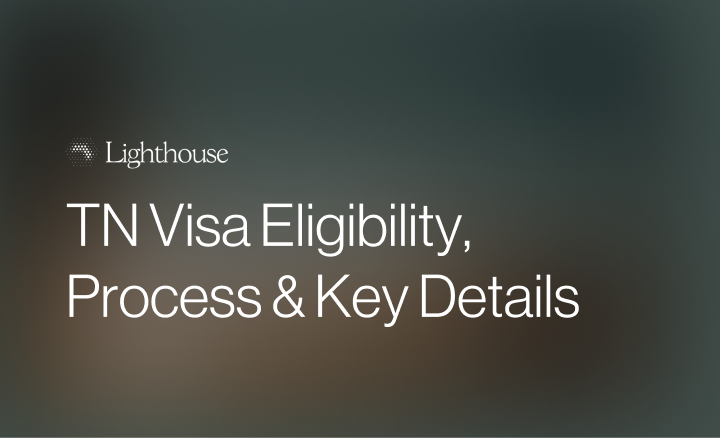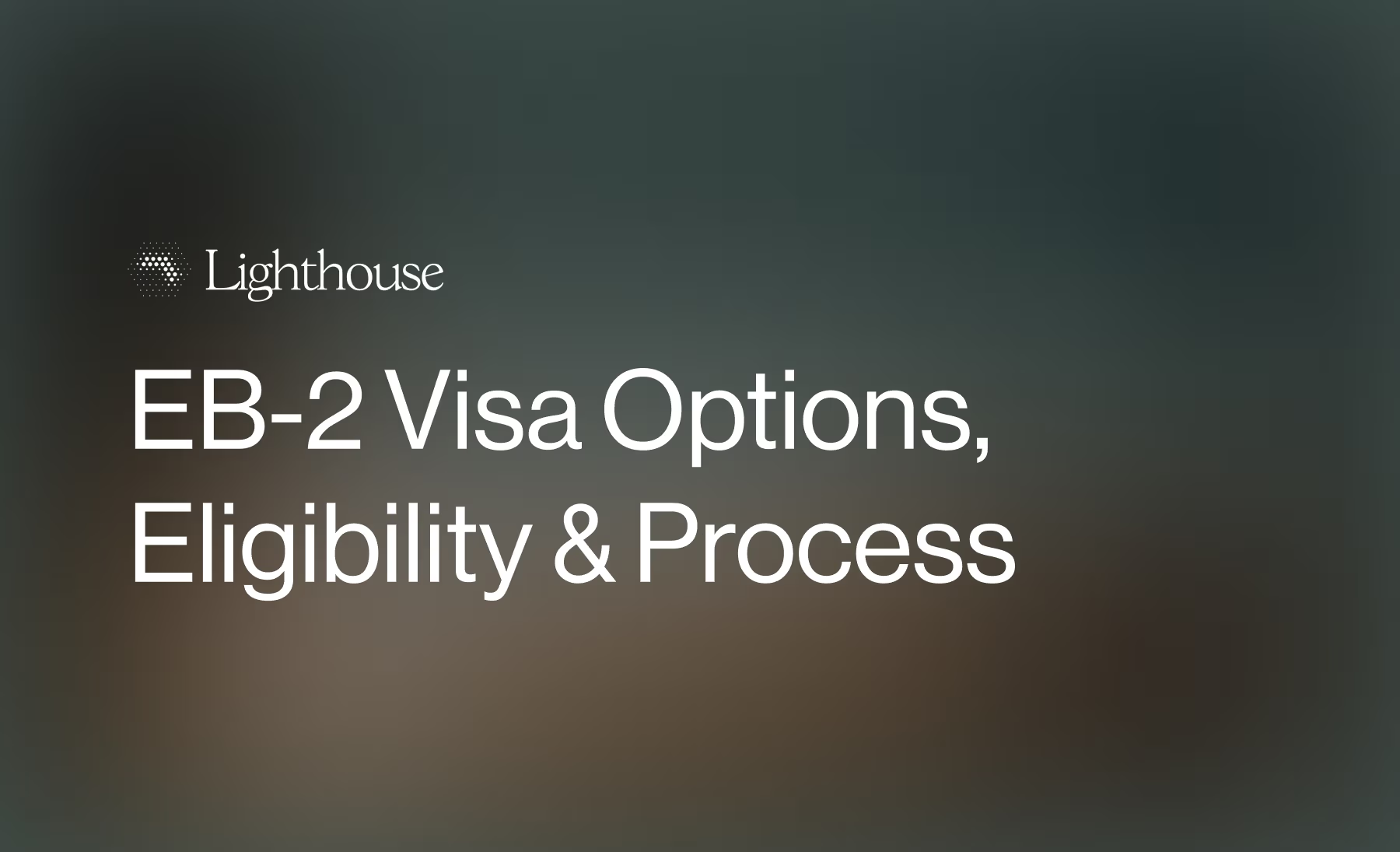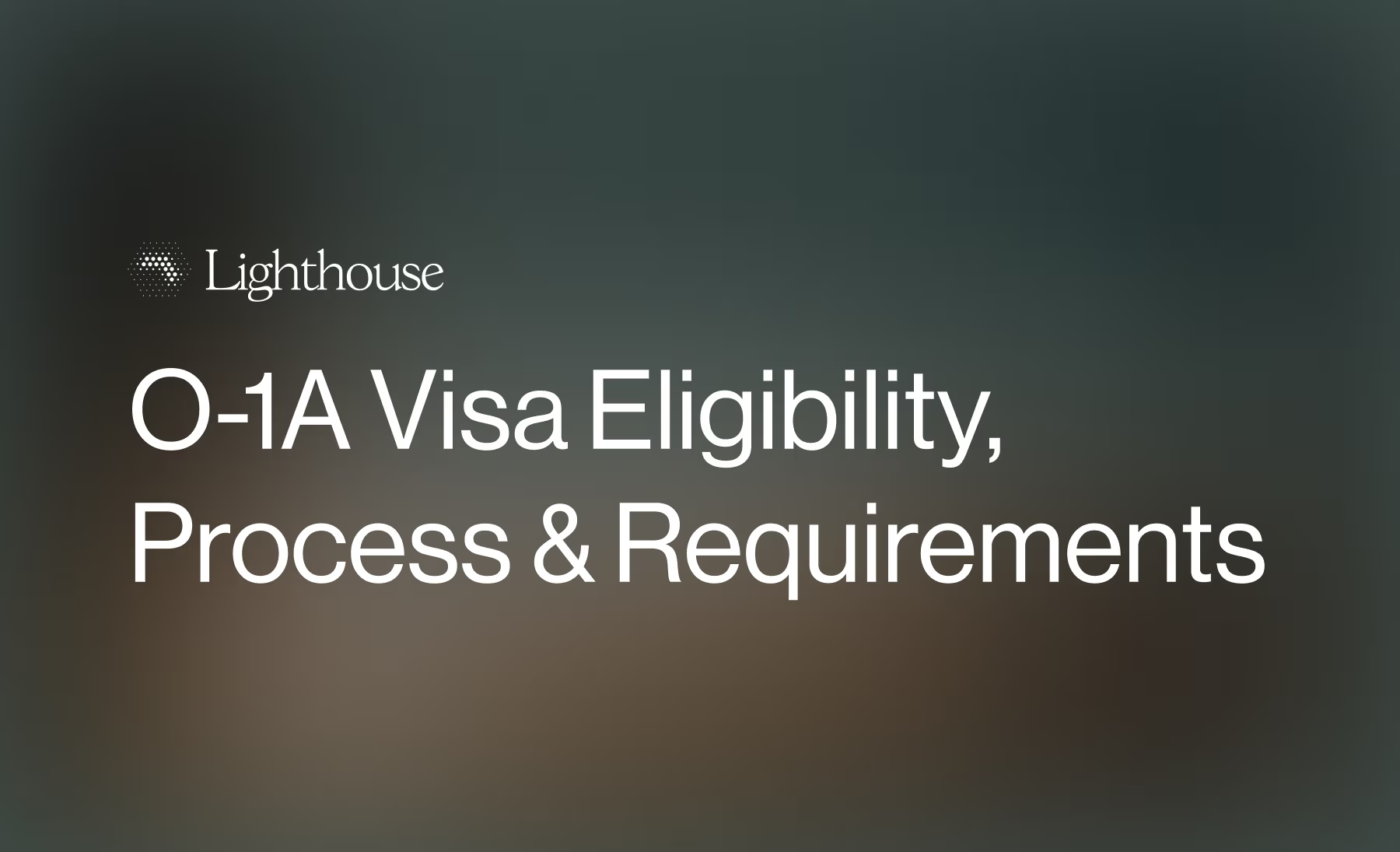The O-1B Visa Explained
Everything you need to know about the O-1B visa for artists and creatives.


If you’re an artist, performer, or creative professional with extraordinary ability in your field, the O-1B visa may allow you to work in the United States. This guide explains who qualifies, how the application process works, and what to expect once you hold O-1 status.
What Is the O-1B Visa?
The O-1B is a nonimmigrant visa for individuals who can demonstrate extraordinary ability in the arts or extraordinary achievement in the motion picture or television industry. It allows you to work in the U.S. temporarily on projects that match your recognized expertise.
The U.S. Citizenship and Immigration Services (USCIS) defines two standards within this category:
- Arts: You must show “distinction,” meaning a high level of achievement and recognition substantially above that ordinarily encountered.
- Motion Picture or Television Industry: You must show “extraordinary achievement,” a higher threshold requiring a record of outstanding recognition or significant international acclaim.
This visa is petition-based, meaning a U.S. employer, production company, or authorized U.S. agent must file the petition on your behalf. You cannot self-petition.
Eligibility Criteria
To qualify for an O-1B visa, you must meet the eligibility standards under 8 CFR 214.2(o). You can qualify in one of two ways:
- By receiving a major, internationally recognized award such as an Academy Award, Grammy, Emmy, or Nobel Prize.
- By meeting at least three of the following specific criteria:
- Lead or starring role in productions or events with a distinguished reputation.
- National or international recognition evidenced by published material or critical reviews.
- Endorsements or testimonials from recognized experts in your field.
- Record of major commercial or critically acclaimed success.
- Significant recognition from organizations, critics, or peer groups.
- High salary or other substantial remuneration compared to others in your field.
For applicants in the motion picture or television industry, USCIS applies heightened scrutiny to confirm that the level of achievement is truly extraordinary.
O-1A vs. O-1B
The O-1A visa covers individuals with extraordinary ability in science, education, business, or athletics. The O-1B visa focuses on the arts and entertainment sectors.
The distinction lies in the evidentiary standard. O-1A applicants must show sustained acclaim across professional achievements, while O-1B applicants must show distinction or extraordinary achievement in a particular field such as film, television, or the performing arts.
Examples of O-1B beneficiaries include actors, directors, choreographers, designers, musicians, and other creative professionals whose work has received significant recognition in major media or through critical reviews.
The Application Process
Step 1: Sponsorship and Petition Filing
A U.S. employer, production company, or U.S. agent (the petitioner) must file Form I-129 (Petition for a Nonimmigrant Worker) with USCIS. The petition must include:
- A written advisory opinion from a relevant peer group, labor organization, or management organization (for example, SAG-AFTRA for actors).
- Copies of contracts or deal memos outlining the terms of employment.
- A detailed itinerary of events or projects, including dates, locations, and descriptions of services.
- Supporting documentation proving your extraordinary ability or achievement.
Petitions can be filed up to one year before the intended start date and should be submitted at least 45 days before employment begins.
Step 2: USCIS Review
USCIS reviews the O-1 petition to confirm eligibility and compliance with the regulations. If approved, USCIS issues Form I-797 (Notice of Action). This approval allows you, the beneficiary, to apply for the actual visa at a U.S. embassy or consulate abroad.
Step 3: Visa Application and Consular Processing
If you are outside the United States, you must complete the DS-160 Nonimmigrant Visa Application and schedule an interview at a U.S. embassy or consulate. Bring your passport, Form I-797 approval notice, DS-160 confirmation page, and supporting documentation.
The Department of State will review your admissibility and confirm your eligibility before issuing the visa.
Step 4: Entering the United States
Once your visa is issued, you may enter the U.S. up to 10 days before your authorized start date. You cannot begin work until that date. Upon entry, U.S. Customs and Border Protection (CBP) will issue an I-94 record that defines your authorized period of stay.
Fees and Processing Time
- Form I-129 filing fee: $460
- Asylum Program Fee: $600 (for employers with more than 25 employees; exemptions apply)
- Premium Processing (Form I-907, optional): $2,805 for a 15-day decision window
- Consular visa application fee: $205
Processing time varies depending on USCIS workload and consular scheduling. Premium processing can shorten the USCIS review period but does not guarantee approval.
Advisory Opinions and Peer Groups
Every O-1B petition must include a written advisory opinion from an appropriate peer group, labor union, or management organization. This document confirms your level of distinction or extraordinary achievement and validates the authenticity of your proposed U.S. engagement.
If no relevant peer group exists for your field, USCIS may grant a waiver, but this must be explained and documented in the petition.
Period of Stay and Extensions
The initial O-1B validity period covers the time needed to complete the event or project, up to three years. Extensions of stay are available in one-year increments to continue or complete the same activity.
You may enter the U.S. up to 10 days before your start date and remain up to 10 days after your authorized stay ends. USCIS may also grant a 60-day grace period after employment ends, allowing time to find new sponsorship or prepare to depart.
Changing Employers or Adding Projects
O-1B status is tied to the petitioner and the specific engagements listed in the approved petition. If you want to work for a new employer or add new projects, a new or concurrent O-1 petition must be filed and approved before you begin the new work.
If your employment terms change significantly—such as a new role, location, or project scope—your petitioner must file an amended petition with USCIS.
Family Members and Support Personnel
O-3 Dependents
Your spouse and unmarried children under 21 can apply for O-3 visas. O-3 visa holders may study in the U.S. but cannot work. Their status is tied directly to your O-1 status, so any change or expiration in your visa affects theirs.
O-2 Support Personnel
If your work requires essential support staff—such as a lighting designer, assistant choreographer, or production manager—they may qualify for O-2 visas. The O-2 petition must show that their skills are integral to your performance and not readily available in the U.S. labor market.
Compliance and Maintenance of Status
You must maintain valid O-1 status by working only for the petitioner(s) and within the approved scope of employment. Keep copies of contracts, critical reviews, and other supporting documentation that demonstrate ongoing eligibility.
If you travel internationally, you must have a valid O-1 visa stamp to re-enter the U.S. Each time you return, CBP issues a new I-94 record that governs your authorized stay.
Long-Term Planning and Green Card Options
Although the O-1B is a nonimmigrant visa, it is compatible with pursuing permanent residence. You can apply for a green card through employment-based categories such as EB-1A (Extraordinary Ability) or EB-2 NIW (National Interest Waiver) without automatically jeopardizing your O-1 status.
This flexibility allows O-1 visa holders to plan long-term careers in the United States while maintaining lawful status.
Choosing the Right Support Partner
The O-1 visa process is evidence-driven and highly technical. Each petition must align with USCIS standards, include a compliant advisory opinion, and present a cohesive record of international recognition.
Lighthouse combines expert case management with technology built for complex immigration filings. We help you organize contracts, gather endorsements, prepare advisory documentation, and structure your O-1 petition to meet every USCIS requirement. Our team coordinates directly with U.S. employers, agents, and peer groups to keep your case on track from start to finish.
If you want help preparing evidence and advisory opinions, review Lighthouse’s O-1B checklist and start your visa process today.
Frequently Asked Questions
Who can sponsor an O-1B visa?
A U.S. employer, production company, or authorized U.S. agent can act as the petitioner. Self-sponsorship is not allowed.
Can I apply for an O-1B if I’m self-employed?
Yes, but only through a qualified U.S. agent who files the petition on your behalf and provides contracts or deal memos for each engagement.
What happens if my employment ends early?
You may receive a discretionary 60-day grace period or until your I-94 expires, whichever comes first. During this time, you can seek new sponsorship or prepare to depart.
Can I extend my O-1B visa?
Yes. You can request an extension of stay in one-year increments to continue or complete the same project or event.
Do O-3 dependents have work authorization?
No. O-3 visa holders can study but cannot work in the United States.
Can O-1B visa holders apply for a green card?
Yes. You can pursue permanent residence through employment-based categories such as EB-1A or EB-2 NIW while maintaining O-1 status.
Is premium processing worth it?
Premium processing guarantees a USCIS decision within 15 calendar days. It can be valuable if you have a fixed project start date or need faster adjudication.
What if I receive a Request for Evidence (RFE)?
An RFE means USCIS needs more documentation to confirm eligibility. Respond promptly with clear, organized evidence such as critical reviews, published material, or endorsements from recognized experts.
Lighthouse provides expert guidance and legal review to strengthen your case.
From document prep to USCIS submission, Lighthouse ensures your petition meets every requirement.

%201.svg)




